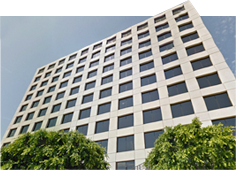EB-2 (Second Preference) Employment Immigration
Due to the significantly shorter processing times than other categories, the EB-2 classification is highly sought after by talented immigrants. In comparison to the EB-3 immigrant category, which can take over three years (or more if the beneficiary is from the Philippines or India), the EB-2 category is current for processing and the Green Card can typically be obtained in less than a year (applicants from India and China will take longer under current processing estimates).
There are three types of EB-2 immigration categories potential applicants should be aware of. While Advanced Degree and Exceptional Ability cases require a labor certification from the Department of Labor and a job offer from a U.S. employer, National Interest Waiver cases typically do not.
Advanced Degree Professionals:
In the most common EB-2 category, the foreign worker possesses and the job calls for an advanced academic degree (Master’s, Ph.D., Juris Doctor (J.D. or law degree) or an M.D. (medicine). The definition of “advanced degree” includes B.A. or B.S. “followed by at least five years of progressive experience in the specialty”.
It is important to note that the five years of experience used to qualify must be post-bachelors. The experience also typically must’ve been gained prior to commencing work for the petitioning employer. Employment with the petitioning employer can only be counted if the qualifying experience is significantly (50%) different from the duties constituting the petitioned-for job.
Aliens of Exceptional Ability:
While the priority EB-1 Green Card is for “Extraordinary Ability” foreign nationals, this EB-2 classification is for the mere accomplished mortals whose skills are “significantly above” others in the sciences, arts, or business. As with the EB-2 Advanced Degree Professional Classification, a test of the U.S. labor market in the form of a labor certification on the part of the employer is required, as is a valid job offer. “Extraordinary” is shown by proving at least three of the following criteria:
- A degree, diploma, certificate, or similar award from a college, university, school, or other institution of learning relating to the area of exceptional ability
- 10+ years of full-time experience in the field
- Licensure or certification to practice the profession
- Salary or payment for services, which demonstrates exceptional ability
- Membership in professional associations
- Recognition for achievements and significant contributions to the industry or field by peers, governmental entities, or professional or business organizations
If the above standards do not readily apply to the occupation, comparable evidence can be used to establish eligibility.
National Interest Waiver (NIW) Professionals:
U.S. immigration law provides priority immigration for individuals that will prospectively benefit the U.S.’ economic, employment, education, cultural, and environmental outlook to a substantially greater degree than a similarly qualified, available U.S. worker would. Such applicants can petition in the EB-2 classification despite not having a job offer from a specific employer and without the need to obtain labor certification.
To qualify for the National Interest Waiver, the applicant’s work must have “substantial intrinsic merit” — that is, be worthy in and of itself. The applicant’s prospective impact must also be national in scope. While a public health researcher coming to work at a local clinic might have difficulty meeting the “national in scope” requirement, if the work is to be performed at a university or government agency, the position is more likely to qualify. (Update: the National Interest Waiver (“NIW”) adjudication standard was changed in December of 2016 following the Matter of Dhanasar decision. Related article here.)
Understanding when and how to properly take advantage of the EB-2 classification can shave years off of waiting for an employment-based immigrant visa. It is also critical to compare the classification to EB-1 and EB-3 options, and understand its interaction with nonimmigrant visa categories, such as the H-1B, L-1, TN, and O-1 visas.






